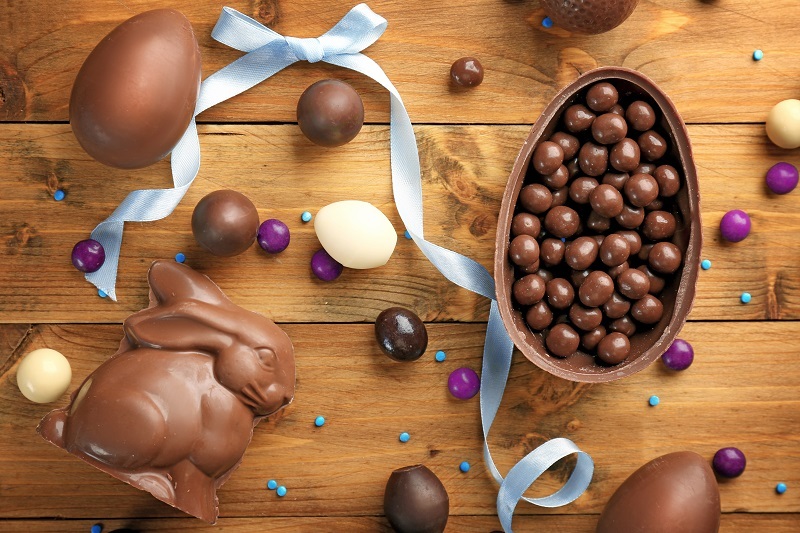Exploring the significance of birth month flowers
Posted on 13/08/2025
Exploring the Significance of Birth Month Flowers
Throughout history, humans have found unique ways to mark the passage of time and to celebrate individuality. One beautiful tradition that has blossomed across cultures is the association of specific flowers with particular months of birth. These birth month flowers carry profound meaning, symbolism, and aesthetic value. As we explore the vibrant world of flowers by birth month, we uncover personal, cultural, and even spiritual layers that add richness to one's identity and commemorative occasions.

What Are Birth Month Flowers?
Birth month flowers are distinctive blooms designated to represent each month of the year, much like birthstones. This tradition dates back to the ancient Romans and gained renewed popularity in the Victorian era, when 'the language of flowers,' or floriography, imbued specific flowers with personal and societal meanings.
- January: Carnation & Snowdrop
- February: Violet & Primrose
- March: Daffodil & Jonquil
- April: Daisy & Sweet Pea
- May: Lily of the Valley & Hawthorn
- June: Rose & Honeysuckle
- July: Larkspur & Water Lily
- August: Gladiolus & Poppy
- September: Aster & Morning Glory
- October: Marigold & Cosmos
- November: Chrysanthemum
- December: Narcissus & Holly
The Origin of Assigning Flowers to Birth Months
This practice originated in ancient times and was further developed during the Middle Ages. The belief was that certain flowers had unique properties and connections to individuals born in specific months. Later, the Victorians refined these associations, giving rise to the widely recognized list of monthly birth flowers we appreciate today.
The Symbolism and Meaning of Birth Month Flowers
Each birth flower is imbued with symbolism, influencing its use in celebrations, gifts, and even personal identity. Let's dive deeper into the significance behind the flowers associated with each month.
January: Carnation & Snowdrop - New Beginnings and Love
- Carnation: Symbolizes love, admiration, and distinction. Its rich history in art and literature makes it a dignified flower to start the year.
- Snowdrop: Stands for hope and rebirth. It's often one of the first flowers to bloom in winter, representing the promise of new beginnings.
February: Violet & Primrose - Faithfulness and Young Love
- Violet: Embodies modesty and spiritual wisdom. This delicate, purple flower represents steadfastness and humility.
- Primrose: Expresses young love and renewal. It signals the arrival of spring and fresh starts.
March: Daffodil & Jonquil - Hope and Renewal
- Daffodil: A universal symbol of rebirth, new beginnings, and hope. Its bright yellow petals uplift spirits after winter.
- Jonquil: Represents affection and desire--a lovely way to express care for those born in March.
April: Daisy & Sweet Pea - Purity and Blissful Pleasures
- Daisy: Signifies innocence, purity, and true love. Its cheerful simplicity is universally adored.
- Sweet Pea: Stands for pleasure and gratitude. Popular in bouquets, it's a fragrant tribute to April birthdays.
May: Lily of the Valley & Hawthorn - Happiness and Hope
- Lily of the Valley: Known for humility, sweetness, and the return of happiness. It's used in many royal wedding bouquets.
- Hawthorn: Represents hope and supreme happiness, making it ideal for May celebrations.
June: Rose & Honeysuckle - Love and Devotion
- Rose: Perhaps the most famous flower, the rose symbolizes love, passion, and honor. Its colors each convey additional meaning.
- Honeysuckle: Represents the bonds of love and devoted affection.
July: Larkspur & Water Lily - Positivity and Purity
- Larkspur: Associated with positivity, grace, and lightheartedness. Different hues have unique meanings--pink for fickleness, white for happiness, and purple for first love.
- Water Lily: Symbolizes purity and enlightenment. Its serene appearance floats elegantly on water surfaces.
August: Gladiolus & Poppy - Strength and Imagination
- Gladiolus: Conveys strength, integrity, and infatuation. Its spikes of vivid flowers conjure images of Roman gladiators.
- Poppy: Represents imagination, remembrance, and consolation. It's often worn on remembrance occasions for its poignant associations.
September: Aster & Morning Glory - Wisdom and Affection
- Aster: Stands for wisdom, valor, and faith. It's often used in storytelling and myth to represent patience.
- Morning Glory: Signifies affection and unrequited love. Its beauty is fleeting, blooming only in the morning.
October: Marigold & Cosmos - Creativity and Joy
- Marigold: Linked with creativity, positivity, and passion. Its vibrant hues capture the richness of autumn.
- Cosmos: Known for order, harmony, and peace.
November: Chrysanthemum - Loyalty and Longevity
- Chrysanthemum: A classic emblem of friendship, loyalty, and longevity. In many Asian cultures, it represents life and rebirth.
December: Narcissus & Holly - Faithfulness and Festivity
- Narcissus: Stands for faithfulness, respect, and modesty. Its name derives from Greek mythology and conveys renewal and hope.
- Holly: Associated with festivity and protection. Its evergreen leaves bring color and symbolism to wintry celebrations.
The Cultural Impact of Birth Flowers
The tradition of associating flowers with birth months is steeped in cultural and historical resonance. From ancient civilizations to contemporary society, the practice has influenced art, literature, and modern gifting rituals.
- In Europe: Birth flowers figure prominently in folk traditions and seasonal celebrations.
- In Asia: Especially in Japan, the hanakotoba (language of flowers) establishes an intricate system of meaning for flowers throughout the year.
- In the Americas: Giving someone's birth month flowers as part of birthday gifts or milestones is a thoughtful, cherished gesture.
Birth flower meanings also appear in poetry, jewelry design, and home decor, and are popular motifs for tattoos, personalized gifts, and commemorative ceremonies.
Modern Uses of Birth Month Flowers
While the ancient and Victorian roots of this tradition persist, modern interpretations have added new dimensions to the symbolism of birth month blooms.
Birth Flower Jewelry and Accessories
Personalized jewelry featuring engraved or enamel birth flowers has become a popular gift choice. These pieces can commemorate birthdays, anniversaries, or represent loved ones.
Custom Bouquets and Gifts
Selecting a bouquet based on one's birth month flower adds a personal and meaningful touch to gift-giving. Florists often create arrangements to highlight these flowers, combining symbolism with beauty.
Home Decor and Art
Wall art, calendars, and decorative objects featuring birth flower illustrations brighten spaces and celebrate family heritage.
Birth Flower Tattoos
Many people choose to adorn their bodies with tattoos of their monthly birth flowers, embracing these symbols as personal totems of identity and memory.
How to Choose and Care for Your Birth Month Flowers
If you're inspired to bring the meaning of your birthday flowers into daily life, here are tips for choosing, growing, and caring for these special blooms:
- Research seasonal availability: Many birth flowers are seasonal. Work with local florists to source the freshest blooms for your bouquet or garden.
- Learn the symbolism: Before gifting, understanding the flower's history and meaning enhances the message you're sending.
- Grow your own: Many birth flowers are well-suited to home gardening. Daffodils, daisies, marigolds, and more can thrive in home gardens, allotting you a living connection to your birth month.
- Care instructions: Each flower has unique care needs. For example, lilies of the valley prefer shade and moist soil, while sun-loving marigolds thrive with regular sunlight and drainage.
Birth Month Flowers: A Unique Personal Symbol
Birth month flowers offer a delightful alternative to astrological signs or birthstones, providing a tangible and beautiful symbol of one's individuality. Their presence at birthdays, weddings, or in tattoos creates a constant reminder of heritage, personality, and tradition.
Choosing to incorporate your personal birth flower in ceremonies, gifts, or your environment is a way to celebrate life's continuity and the connection between nature and personal identity. For families, creating a garden with each member's birth flowers is a charming and meaningful tradition that will flourish for years.

Celebrating Occasions With Birth Month Flowers
From birthdays and anniversaries to Mother's Day and graduations, birth month flowers provide a timeless way to mark milestones:
- Birthday Bouquets: Surprise your loved ones with a vivid arrangement of their birth month blooms.
- Anniversary Gifts: Combine partners' birth flowers for a bouquet that tells the story of your union.
- Mother's Day: Choose a mixed arrangement representing the birth flowers of each child for a touching tribute.
- Memorials: Use specific birthday flowers to honor those who have passed, symbolizing their lasting presence in your life.
Conclusion: The Enduring Allure of Birth Month Flowers
Journeying through the world of birth month flowers reveals the poetry and significance that can be found in simple, stunning blooms. These flowers not only mark the time of our arrival in the world but also offer an enduring language of love, respect, and memory. No matter the context--whether in gardens, bouquets, art, or jewelry--birth month flowers transform life's important moments into deeply personal expressions. Next time you celebrate a birthday, consider the power and meaning hidden in the petals - a timeless gift from nature, beautifully tied to the story of you.
Embrace your birth month flower, and let it inspire a lifetime of joy, gratitude, and connection.
Latest Posts
Unveiling Your Birth Flower and Its Hidden Secrets
Exploring the significance of birth month flowers
Explore the Top 5 Flowers to Gift on Valentine's Day





